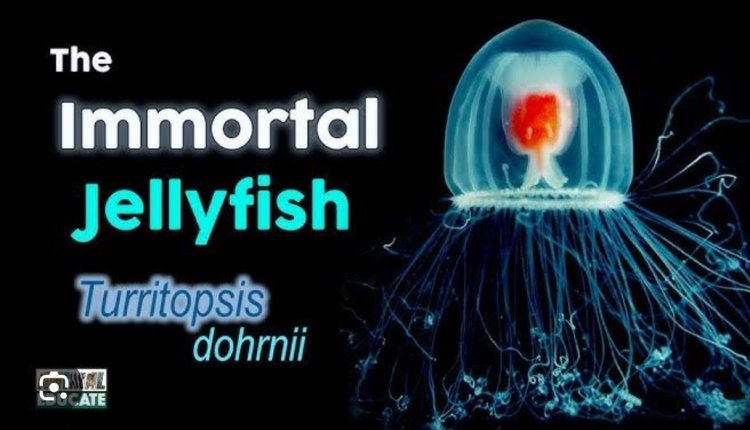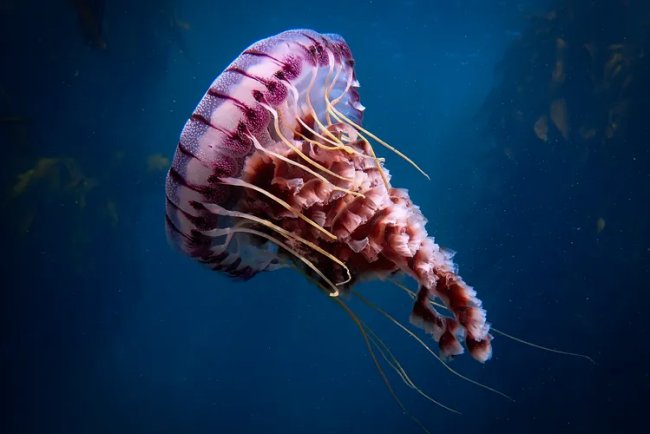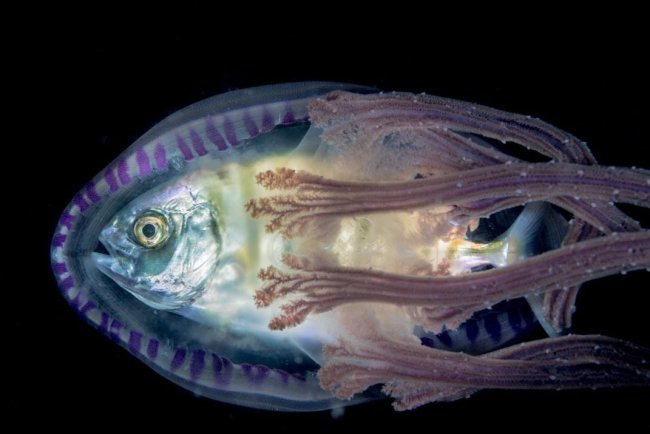The Ocean's Ancient Enigma
Unveiling the mystery of jellyfish, some of the oldest multi- organ animals on earth.

Biological immortal species – Jellyfish
Introduction
With their pulsating bells and trailing tentacles, jellyfish drift through the world's oceans as ethereal and captivating phantoms. Often perceived as simple, primitive creatures, they are, in reality, a masterclass in biological efficiency and resilience. These ancient marine invertebrates, which have been swimming the seas for at least 500 million years, have outlasted dinosaurs and countless other species, evolving a unique and highly successful survival strategy. This report delves into the fascinating biology, life cycle, and ecological significance of jellyfish, revealing them to be far more complex and vital to the marine ecosystem than their seemingly simple forms suggest.
The anatomy of simplicity:A body without organ

The most striking feature of jellyfish anatomy is what they lack. They possess no brain, heart, lungs, bones, or even blood. Their bodies are remarkably simple, composed primarily of a jelly-like substance called mesoglea, sandwiched between two thin layers of cells. This composition makes them incredibly efficient; a jellyfish can be up to 98% water, allowing them to remain buoyant with minimal effort.
Instead of a centralized nervous system, they have a "nerve net" spread throughout their bodies. This net allows them to detect stimuli, such as light and touch, and coordinate their movements. Their bell, or medusa, contracts to propel them through the water in rhythmic pulses, while a ring of balance organs called statocysts helps them orient themselves in the water column. The stinging tentacles that hang from the bell are their primary tools for defense and feeding.
A Life of Many Forms: The Complex Life Cycle
Contrary to their adult appearance, the life cycle of a jellyfish is often far from simple. Most species undergo a dramatic metamorphosis involving two distinct stages:
1.The Polyp Stage:This is the juvenile, or asexual, phase. A fertilized egg develops into a larva, which settles on a hard surface and grows into a plant-like polyp. These polyps are sessile (fixed in one place) and can reproduce asexually by budding, creating clones of themselves.
2.The Medusa Stage: When conditions are right, the polyp can transition into the medusa stage through a process called strobilation, where it "buds off" tiny, free-swimming jellyfish. These medusae are the familiar adult form that reproduce sexually, completing the cycle.
This two-stage life cycle contributes to their remarkable resilience. One exceptional example is the "immortal jellyfish" (*Turritopsis dohrnii*), which has the unique ability to revert from its adult medusa stage back into a polyp, effectively starting its life anew and earning it the title of being biologically immortal.
The Ocean's Ancient Hunters
Jellyfish are formidable predators, despite their lack of a brain. Their hunting strategy relies on their specialized stinging cells, called **nematocysts**, which line their tentacles. Each nematocyst is a miniature, coiled harpoon-like structure filled with venom. When a smaller organism, like plankton or a small fish, brushes against a tentacle, the nematocyst fires with explosive speed, injecting venom to paralyze the prey. The tentacles then retract, bringing the meal to the jellyfish's mouth, located on its underside.

They play a crucial, if sometimes disruptive, role in the marine food web. They are a food source for a number of species, including sea turtles and certain fish, and they act as primary predators for small crustaceans and fish eggs.
Jellyfish in a Changing World
Jellyfish are a barometer of oceanic health. They are highly adaptable and thrive in conditions that are challenging for many other marine species, such as warmer waters and low-oxygen "dead zones." As climate change leads to rising sea temperatures and ocean acidification, and overfishing removes their natural predators and competitors, jellyfish populations are increasingly prone to large-scale blooms, or swarms. While these blooms can be a natural part of their life cycle, their increasing frequency and intensity in some areas have significant ecological and economic consequences, clogging fishing nets, shutting down power plants, and impacting tourism.
Conclusion
Far from being mindless drifters, jellyfish are an ancient and remarkably sophisticated group of organisms. Their simple body plan, complex life cycle, and powerful predatory capabilities have allowed them to thrive for over half a billion years. As we navigate a future of rapidly changing ocean ecosystems, understanding the biology and ecology of jellyfish is becoming more critical than ever. They serve as a powerful reminder that resilience and success in nature do not always require a brain or a heart, but rather a mastery of the environment and a biology finely tuned for survival.













